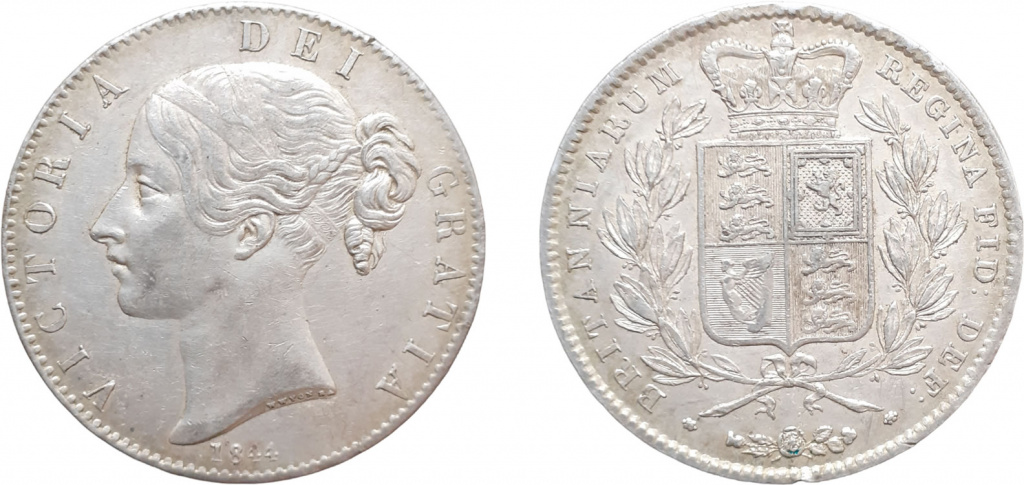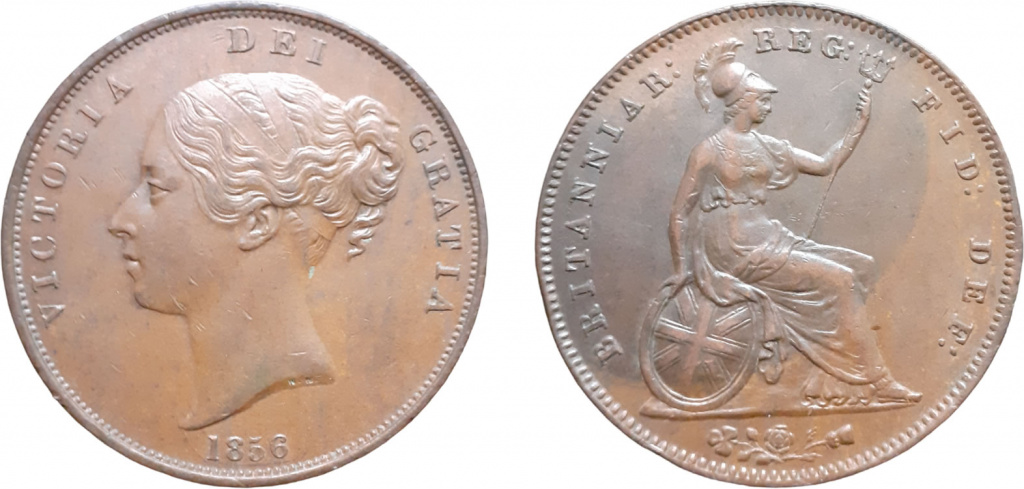Coins in the roof
I’ve heard of coins being found in all sorts of places, which include the ground, soil in a plant pot, in a stream, in a locked drawer in an old piece of furniture, in a skip, in a wall, in tree roots, under a carpet and in other places. However, the two coins featured here were discovered in a place I’d never previously heard of. The coins came in from Bill Wiggins, who said they had been found in a crack in a wooden beam in the roof of a Victorian house whilst installing loft insulation.
Would the coins have been purposely hidden in the beam? They would definitely have been placed there, for it would have been impossible to lose them in the same crack. I doubt very much that they were hidden with the intent of retrieving them at a later date. After all, there would be far easier hiding places lower down in the house. So why were they there? Perhaps they were placed there for luck. I’ve heard of cases where strange things – shoes, for instance – have been found in the walls of old houses. These things could have been hidden in order to bring health and/or wealth to whoever lived there, so the two coins might have been hidden for the same reason.
Crown piece of Victoria
The first coin is a silver crown piece of Victoria.

It is dated 1844 on the obverse and had not seen much circulation when it was deposited into the beam. There are two small nicks on the lower obverse and a number of other slight surface nicks but the coin is otherwise in good VF condition.
It’s not a rare coin but its grade of preservation is higher than lots of other examples I have seen. A number of varieties are on record for 1844 crown pieces, some quite common whilst others are rare. In its present condition this specimen (depending on the variety) should be worth at least £250.
Penny of Victoria
The second coin is a copper penny of Victoria, which is dated 1856 on the obverse.

It is the type on which Britannia holds a plain trident and the space between DEF and the colon that follows on is not large.
Halfpence and farthings dated 1856 are fairly common but pennies are very rare. This specimen has a few nicks on both sides but is otherwise in about EF condition. The nicks will reduce its commercial value but to a keen collector this copper penny shouldn’t be worth any less than £450.

